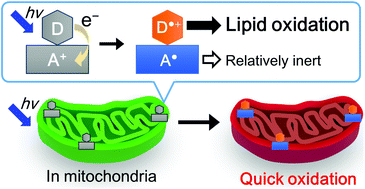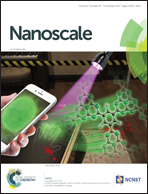Photoinduced electron transfer reaction in mitochondria for spatiotemporal selective photo-oxidation of lipids by donor/acceptor linked molecules†
Abstract
Donor–acceptor-linked molecules have been synthesized and utilized to induce the rapid and site-selective lipid-oxidation in mitochondria by utilizing a photoinduced intermolecular electron transfer reaction. Two water-soluble donor–acceptor molecules (1 and 2) were designed and synthesized for this purpose. 2 was prepared to modulate its affinity to cell membrane in mitochondria. Confocal laser microscopy experiments revealed that 1 and 2 possess high localization abilities in mitochondria. By the photoinduced electron transfer, 2 exhibited the remarkable oxidation ability of lipids, mainly cardiolipin. In HeLa cells, 2 triggered mitochondrial lipid oxidation, which was followed by apoptotic cell death, under illumination within a few seconds. These results show that the present molecular system is highly promising to utilize the photoinduced intermolecular electron transfer reaction in a precise spatiotemporal manner in a cell by using light.



 Please wait while we load your content...
Please wait while we load your content...